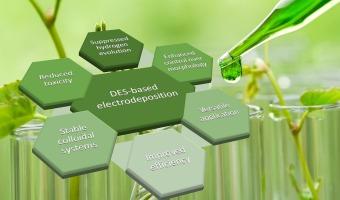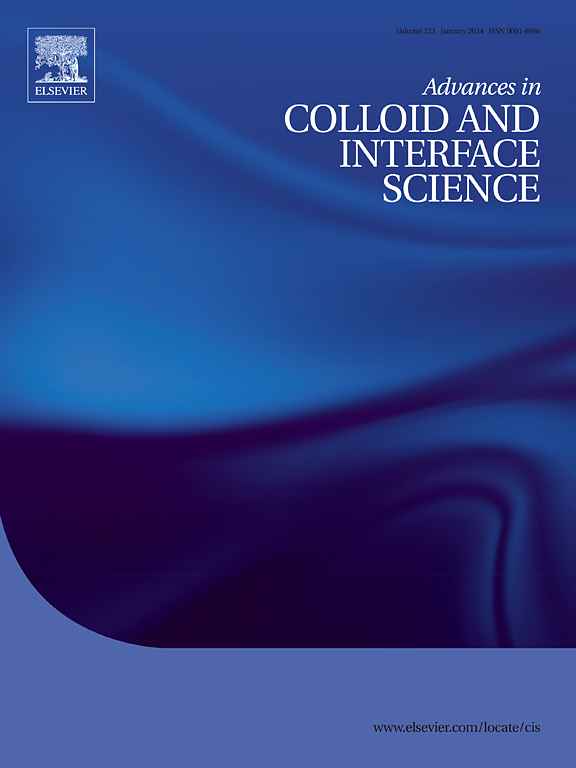打破电沉积障碍:基于利用深共晶溶剂的新型环保方法。
IF 15.9
1区 化学
Q1 CHEMISTRY, PHYSICAL
引用次数: 0
摘要
这篇综述文章全面探讨了在电沉积技术中使用深共晶溶剂 (DES) 的创新方法。通过对基本原理的深入探讨,该研究强调了 DESs 作为电解质的优势,包括降低毒性、增强对沉积参数的控制以及对形态的特定影响。通过展示具体的研究和实验结果,文章提供了基于 DES 的电沉积方法性能优越的具体证据。主要研究结果表明,利用 DES 可以实现贵金属和过渡金属镀层、其合金和复合材料镀层的环保型电沉积,以及半导体和光伏合金镀层的电沉积;同时还能解决传统电解质中的氢演化等难题。值得注意的是,基于 DES 的电解质有助于形成具有独特纳米结构的电沉积物,并提高了用于复合涂层的胶体系统的稳定性。文章包含宝贵的表格,详细介绍了各种金属、合金和复合材料的电解质成分、电沉积条件和沉积结果,是研究人员和行业从业人员的实用手册。总之,这篇综述强调了 DES 对电沉积技术的变革性影响,并强调了未来在表面改性和材料合成方面的发展前景。本文章由计算机程序翻译,如有差异,请以英文原文为准。

Breaking barriers in electrodeposition: Novel eco-friendly approach based on utilization of deep eutectic solvents
This review article provides a comprehensive examination of the innovative approaches emerging from using deep eutectic solvents (DESs) in electrodeposition techniques. Through an in-depth exploration of fundamental principles, the study highlights the advantages of DESs as electrolytes, including reduced toxicity, enhanced control over deposition parameters, and specific influences on morphology. By showcasing specific studies and experimental findings, the article offers tangible evidence of the superior performance of DES-based electrodeposition methods. Key findings reveal that DESs utilization enables eco-friendly electrodeposition of noble metal and transition metal coatings, coatings of their alloys and composites, as well as electrodeposition of semiconductor and photovoltaic alloy coatings; while also addressing challenges such as hydrogen evolution in conventional electrolytes. Notably, DES-based electrolytes facilitate the formation of electrodeposits with unique nanostructures and improve the stability of colloidal systems for composite coatings. The article contains invaluable tables detailing electrolyte compositions, electrodeposition conditions, and deposition results for a diverse array of metals, alloys, and composites, serving as a practical handbook for researchers and industry practitioners. In conclusion, the review underscores the transformative impact of DESs on electrodeposition techniques and emphasizes the prospects for future advancements in surface modification and material synthesis.
求助全文
通过发布文献求助,成功后即可免费获取论文全文。
去求助
来源期刊
CiteScore
28.50
自引率
2.60%
发文量
175
审稿时长
31 days
期刊介绍:
"Advances in Colloid and Interface Science" is an international journal that focuses on experimental and theoretical developments in interfacial and colloidal phenomena. The journal covers a wide range of disciplines including biology, chemistry, physics, and technology.
The journal accepts review articles on any topic within the scope of colloid and interface science. These articles should provide an in-depth analysis of the subject matter, offering a critical review of the current state of the field. The author's informed opinion on the topic should also be included. The manuscript should compare and contrast ideas found in the reviewed literature and address the limitations of these ideas.
Typically, the articles published in this journal are written by recognized experts in the field.

 求助内容:
求助内容: 应助结果提醒方式:
应助结果提醒方式:


